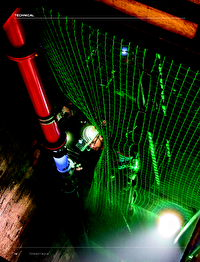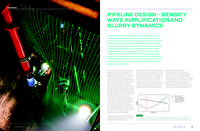For many years, dredging pipelines have been designed with steady-state models for the energy losses in a pipeline and the energy added by the centrifugal pumps. The design of a hydraulic transport system starts with a criterion for the capacity of the pipeline, in how many sediment the system needs to transport per unit time. Following this, the designer needs to determine the pipe diameter, by estimating the magnitude of energy lost by the slurry as it flows through the pipeline, and the energy generated by the centrifugal pump(s) to drive the system. This is typically done using a steady-state analysis, where it is assumed that the mixture velocity and sediment concentration in the pipeline are constant in space and time. However, a steady flow and concentration are only possible in laboratory circuits and is not representable for the concentration distribution in field pipelines during dredging operations. This is due to the cyclic nature of the sediment feed of dredging pipelines, for instance the swaying and stepping of a cutter suction dredger.
The steady-state design method looks at the intersection of the pump pressure curve and the pipeline frictional losses curve (see Figure 1). The intersection between these two curves is the mixture velocity at which the pipeline will operate (the “operating point”) at a given steady concentration. Any changes of the sediment concentration in the pipeline, or flowing through the pump, will cause the operating point to shift, resulting in mixture velocity variations. Both characteristic curves of the pump pressure and mixture frictional losses are typically determined in laboratory circuits under steady conditions. The operating velocity should be above the critical velocity to avoid blockages and below the vacuum limit to avoid cavitation. The critical velocity is defined as “the minimum velocity required for transport of solid material through a pipeline without any particle deposition” (van den Berg and Stam, 2013). The final design includes an estimation of the number of pumps, the required power for the pump drives and the volumetric concentration of material in the pipeline at an appropriate pipe diameter.














 (14)
(14)






